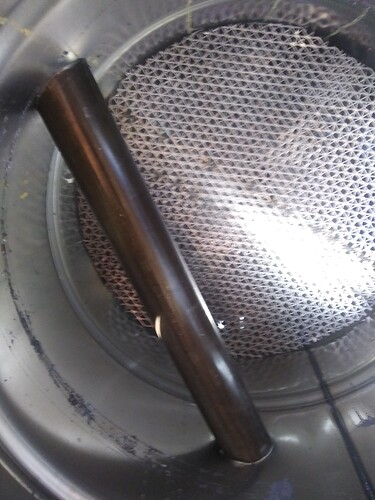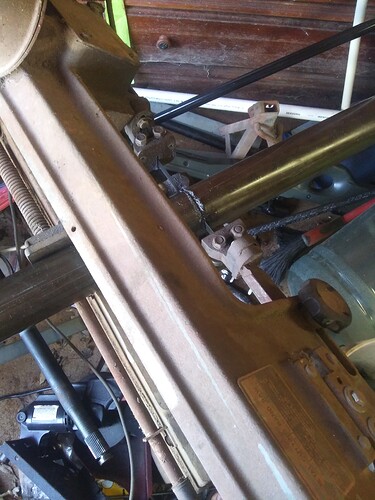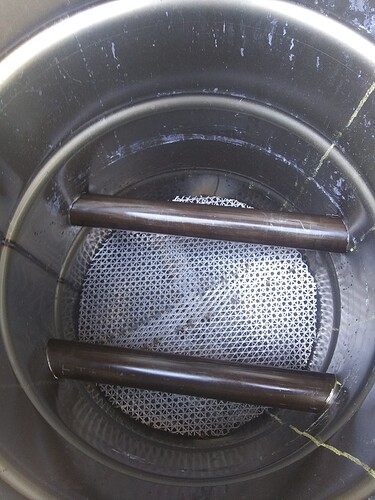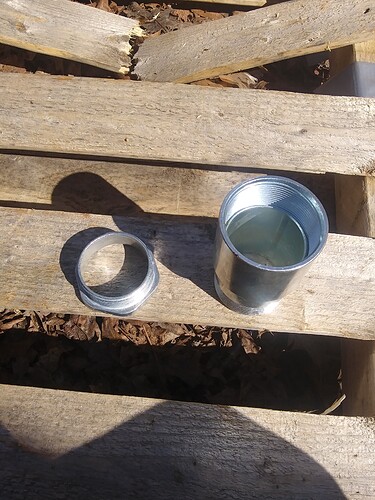It isn’t recommended for the carbide holesaws, but my personal practice is once the pilot bit gets started through the material just before the holesaw touches I clicked it in reverse and let the carbide establish a mark for the teeth to follow then go back forward and go slow. Easiest done in a drill press so you holding the tool gets taken out of the equation. We use them sometimes on trucks as work routing hydraulic lines but I usually opt for the mag base drill for big holes like that. Downside is the drill and bits are CRAZY exspensive. Like 70-150$ for a single bit. Iv had great like with the milwaukee hole dozer kit, the lenox is pretty good too but don’t seem to last as long
Try it, its your build!
However l must be honest, l smell trouble. See, the goal is to expose as litle of the flute to the heat. Normaly in a updraft mode, probably less thain 25% of the circumference is in contact with heat. The rest is shealded with cold charcoal. But here you not only doubled the area, you allso need to keep in mind there is a hollow formed under the pipe, glowing white hot on the side so now you preety much have the whole surface of the flute touch the heat.
You can cut the holes at 90° then put in the pipe and bend/lever the metal to accept the right angle
Or blow a big hole, put in a sleeve pipe so the flute is removable and weld up the gaps.
I’ll see if one of my other drills will work better. My cheap corded power drill has no torque settings so when it snags, it really snags and wants to fly out of my hand.
While we are wondering… Because of the down facing nozzle of the svetland, I wondered if you could do like a water jacket but with the holes at the far end then have water drip into it, and it could boil out.
Then I am like that seems stupid because water has a low boiling point, and really you just need something with a melting point lower then steel to cool it on the backside… I wonder if you could pour aluminum in the gap, which would melt at a low temperature and is thermally conductive, and transfer the heat up the length of the pipe. It increases the surface area for it to cool off. Without the need for the steam and water.
Call a well drilling company. They may have scrap well pipe from an old well, they are willing to part with for scrap metal prices or maybe you can haul it off for free, but they have much larger diameters. Ours charges a disposal fee.
I think the Swedlund used a kanthal pipe tip for its heat shielding, I don’t think it had a water jacket to cool the nozzle, it had a steam generator that was heated by exit gas and the steam entered near the beginning of the air inlet.
Oh very well could have, I just saw nozzle facing down and ran with it. ![]()
First pipe mocked up. Cut the holes square to the barrel and used the tubing to bend it to how I needed it.
And now pipe number two.
Thank God that grandpa(rest in peace) left his metal bandsaw. A lot of the metalworking tools I have are from him prototyping textile machinery patents. Wish I could find some die filer files, I can’t find any of them in his tool drawers.
Looks like you are minutes away from a flare to me!
I just need to secure a hole for the gas exit port. My 2" hole saw broke some teeth so I’m out that one. The 2.5" cuts too big of a hole to seal up well. I’ll have to drive to the “local” hardware store and see if they have a 2.25" saw in stock. This is what my gas exit port will consist of, the rigid conduit nipple and coupler. The nipple threads all the way against the coupler so I can apply exhaust sealant and crank it down. I think if I had a gas shielded welder I could just weld the coupler to the barrel but my flux wire welder runs way too hot and just blows holes.
As of right now i can still pick up the reactor with little effort, so that’s a plus!
Well if it was me l wuld concider fileing out the hole with a round or semiround file before concidering driveing to the store  but thats just me.
but thats just me.
Ok. Lets talk dimensions now! Can you give us dimensions real quick? Height from flute to lid, flute to flute and flute to grate?
Allso, lt is worth mentioning the outlet coupling is the most cruicial thing about the entire gasifier so asure a 100% foulproof seal. A pinhole here can mean the difference betweed the engine not working at all, engine working like crap and engine working like a charm. Any other leak can cause problems but this is cruicial.
Flute to lid is about 19" from where the holes would be to the rim.
Flute to grate is roughly 9 inches.
And bottom to grate is about 6 inches.
Flute to flute gap is 8.5 inches.
And yeah that’s why I want to make it a very close hole. I’m going to seal the threads and any place that will contact the drum from inside and out. The 2" saw was too undersized to force it in and my caliper measures the size of the nipple being 2.30, so a 2.25 inch saw should make a very tight hole.
Yes, remember gasifiers are female and tightness in certain places is deeply desired 
Ok. You will not have a ton of range with the 19" of hopper but everithing else looks good. Have you determined your nozzle layout? If it were me l wuld go with 3 9mm holes per flute say 2.5 " apart. Pointed slightly downwards, since you got enough space under the flutes and a bit tight hopper volume.
Edit
Man this thing will kick ass… Got me in the gasifier building mode 
I don’t really go long distances so it won’t bother me much. My drive to and from work is about 30 or so miles round trip. I was thinking of buying a bunch of the 25 gallon plastic drums and use that to store the charcoal for refueling on the go.
I really want to emulate Bruce’s water mist setup as far as liquid addition goes.
Also I might try to mount this on a Reece Hitch style cargo carrier to hang off the back. If it can sit lower than the bed I might make a hopper extension for longer rides but as it sits in the bed it is flush with the roof of the Mazda.
Sounds like a plan then! Charcoal has a unique advantige for on the go refueling. First its smokeless. Second, it will flow like water trugh a 6" hole so refueling with a “fuel can” with a 6" opening will make this fast and l smooth.
The mister is a good idea. Cooling the nozzles gently and evenly. But, keep in mind water freezes and things clogg water lines. Allso it needs to be precisely metered. But on the plus side it can be shut off in an instant!
What this design will alow you to do is burn damped char. No freeze problem, no dust, precise metering. More power demand, more charcoal burnt, more it releases water! Automaticly.
But tgats all fine tooneing you will figure what works for you.
You are pretty much the reason I decided to do this downdraft Char unit. Plus your other builds. I live in a hilly area similar to yours, the Appalachians, and seeing how little trouble you had gave me confidence for charcoal.



